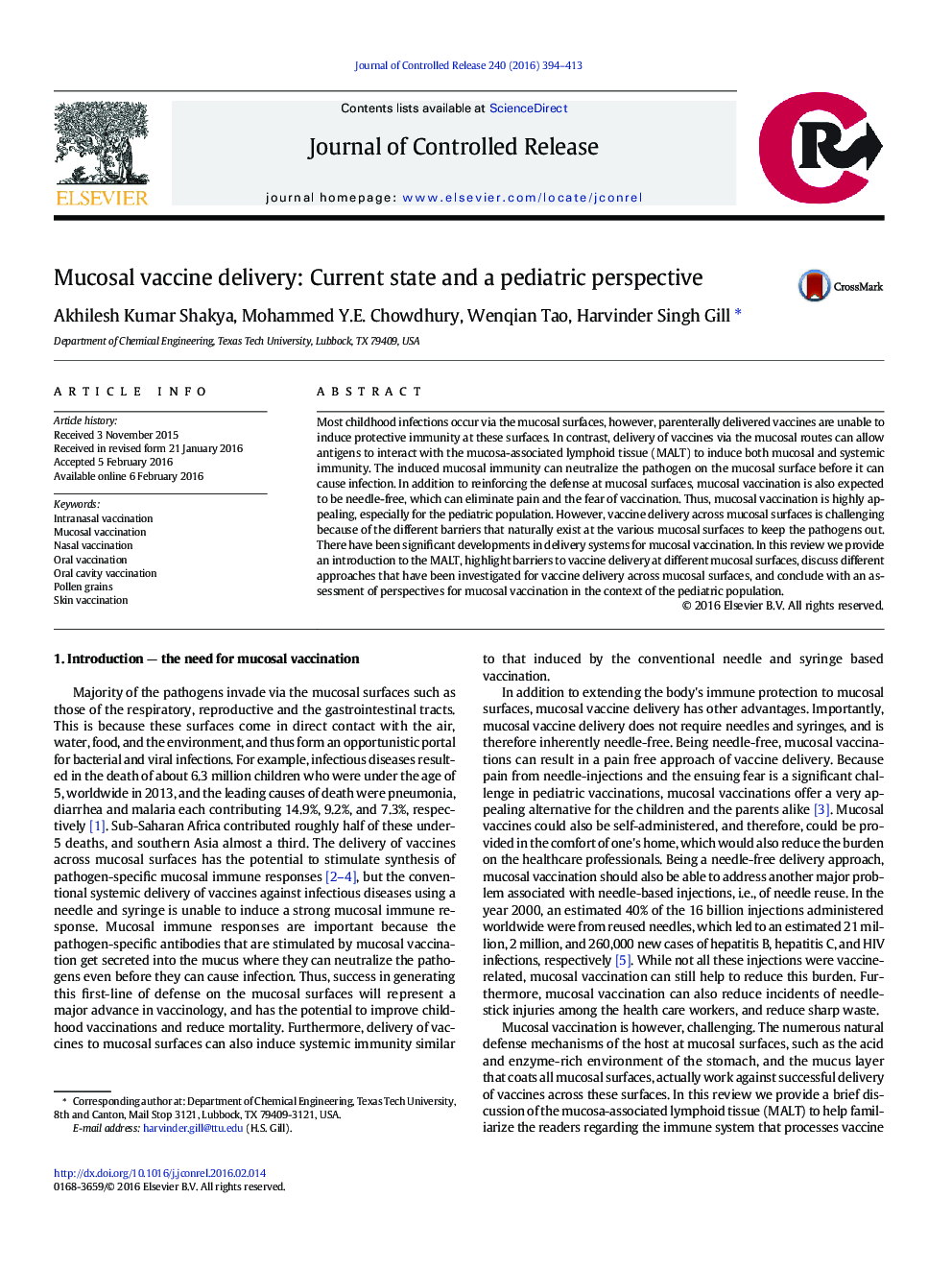| Article ID | Journal | Published Year | Pages | File Type |
|---|---|---|---|---|
| 5433992 | Journal of Controlled Release | 2016 | 20 Pages |
Most childhood infections occur via the mucosal surfaces, however, parenterally delivered vaccines are unable to induce protective immunity at these surfaces. In contrast, delivery of vaccines via the mucosal routes can allow antigens to interact with the mucosa-associated lymphoid tissue (MALT) to induce both mucosal and systemic immunity. The induced mucosal immunity can neutralize the pathogen on the mucosal surface before it can cause infection. In addition to reinforcing the defense at mucosal surfaces, mucosal vaccination is also expected to be needle-free, which can eliminate pain and the fear of vaccination. Thus, mucosal vaccination is highly appealing, especially for the pediatric population. However, vaccine delivery across mucosal surfaces is challenging because of the different barriers that naturally exist at the various mucosal surfaces to keep the pathogens out. There have been significant developments in delivery systems for mucosal vaccination. In this review we provide an introduction to the MALT, highlight barriers to vaccine delivery at different mucosal surfaces, discuss different approaches that have been investigated for vaccine delivery across mucosal surfaces, and conclude with an assessment of perspectives for mucosal vaccination in the context of the pediatric population.
Graphical abstractDownload high-res image (185KB)Download full-size image
